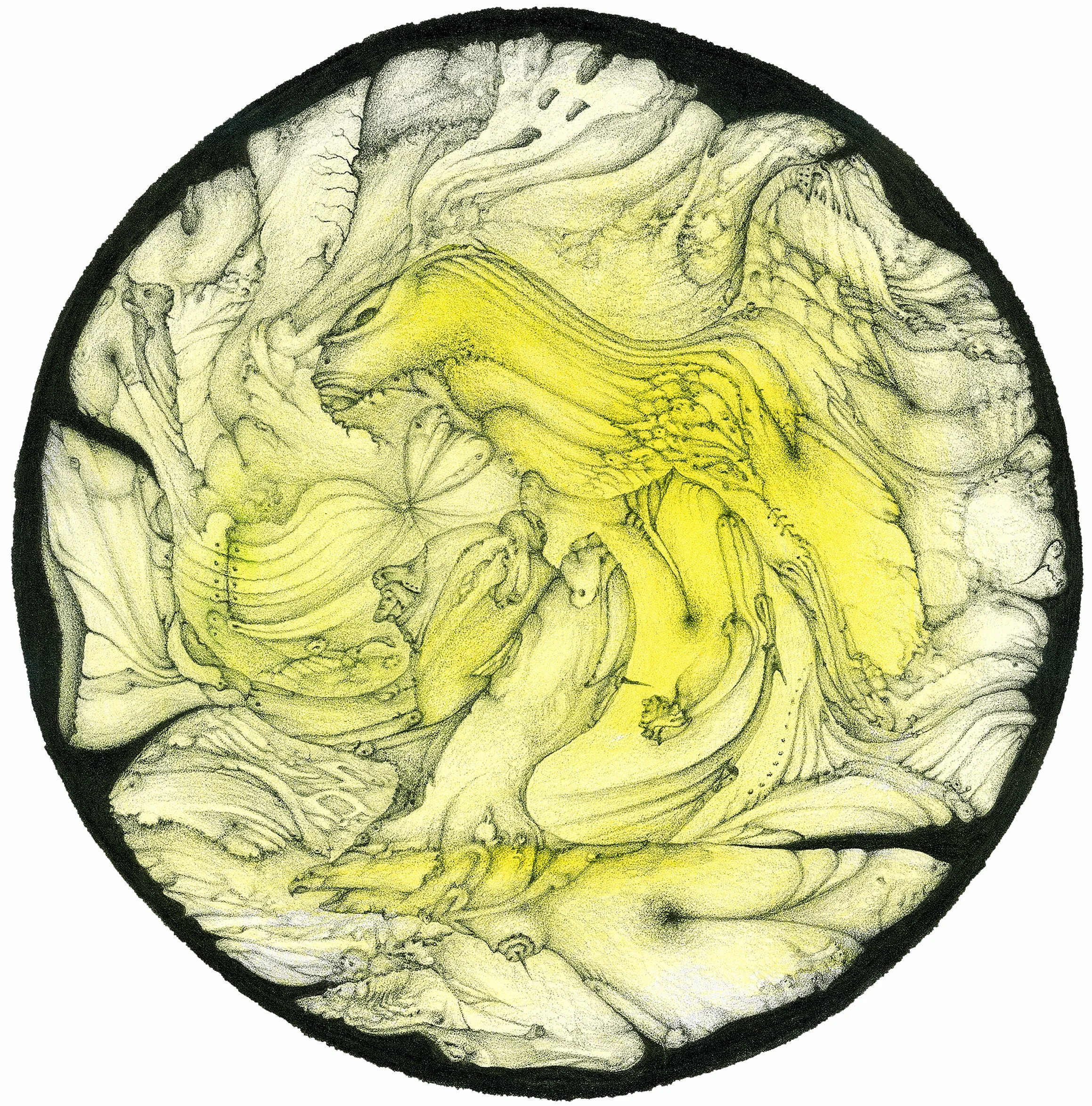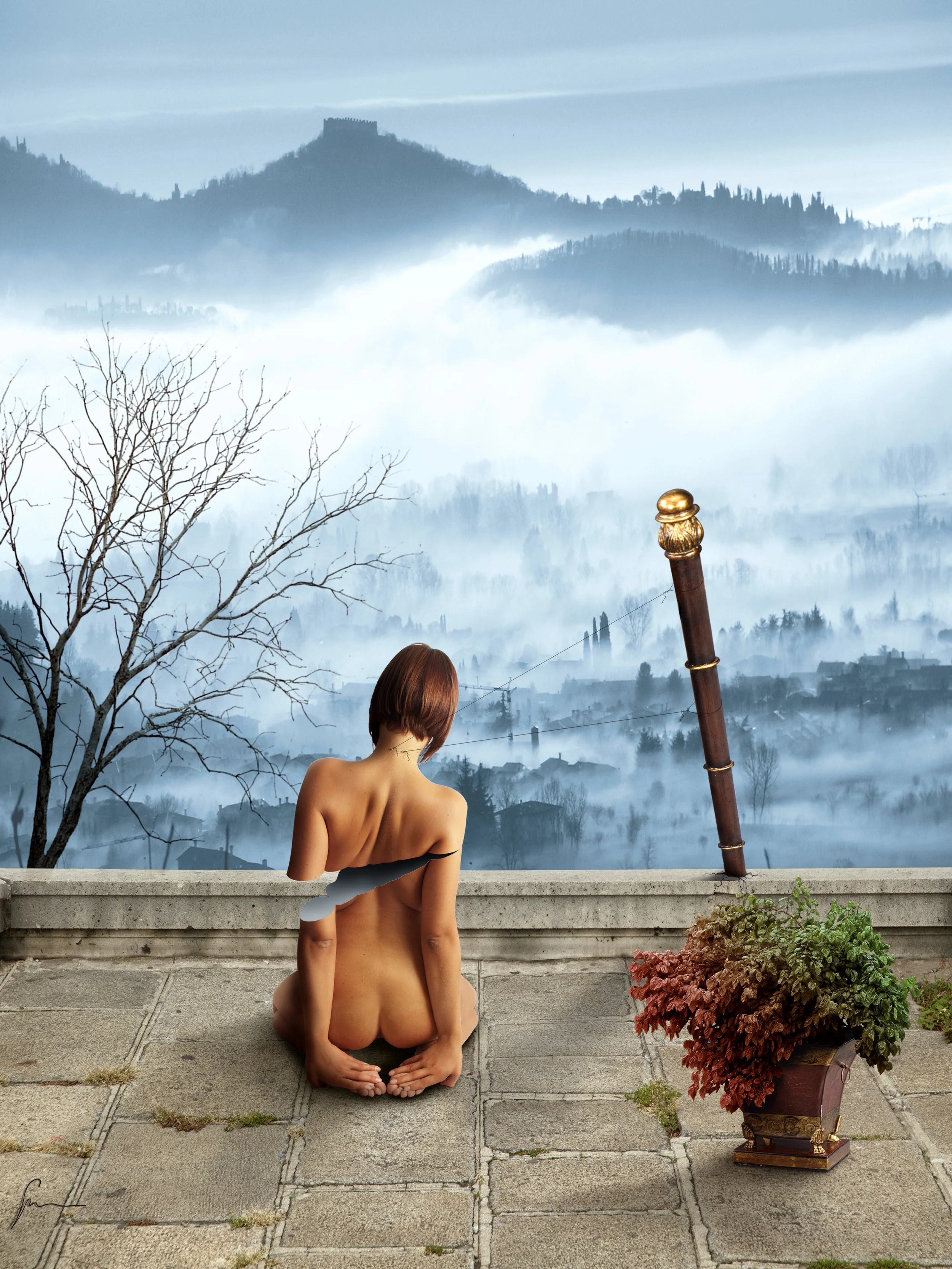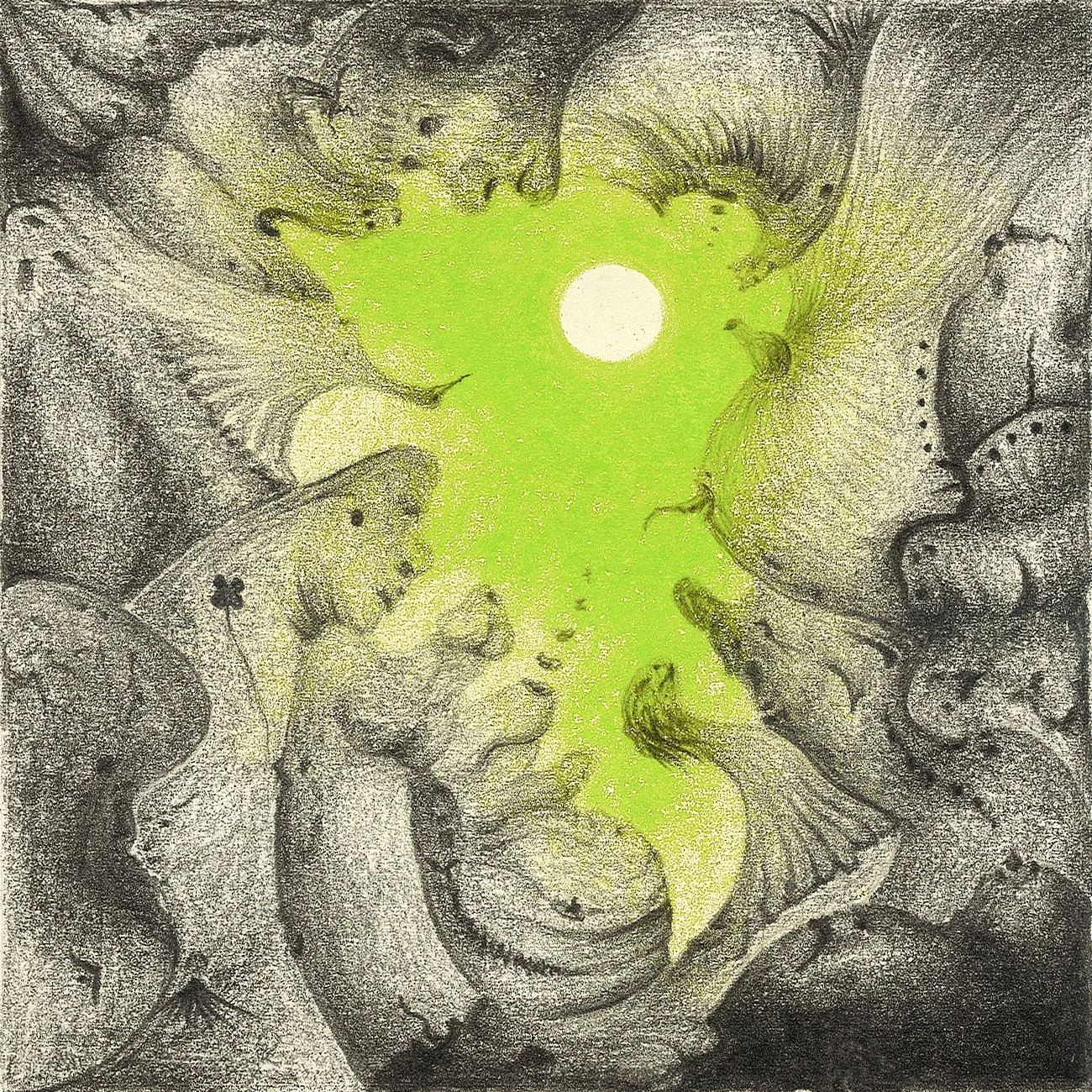Interview with Giovanni Gambasin
Giovanni Gambasin, born in 1951, started out in a family that was foreign to the artistic world. However, destiny led him on a unique artistic path, growing up in an unusual context: his father was sacristan of a small church in Crespano del Grappa, designed by none other than Antonio Canova as a 'dress rehearsal' for the Canovian temple in Possagno, the neoclassical artist's birthplace. A certainly peculiar context for the training of an artist.
During his two-year conscription in the Navy, Gambasin experienced a remarkable transition from the Veneto mountains to the sea, even on board a submarine. This experience, far from his usual environments, perhaps helped to trigger an interest in surrealism. The turning point came when he came across Salvador Dali's surrealist work, 'Giraffes on Fire', which fascinated him deeply. Despite his limited knowledge of Surrealist art at the time, Gambasin rightly calls himself an autodidact.
Gambasin's artistic journey began with his decision to learn painting through a correspondence course on painting techniques. Self-taught became a distinctive feature of his artistic development, with varied experiences including work with illustrator Umberto Biancato. Work with rebuses and drawings for weekly puzzles led him to realise that drawing could be his true vocation.
Despite having to work a variety of jobs to support himself, from car wash to factory welder, from tool mechanic to electrician to milk collection driver, Gambasin maintains a connection with the concreteness of everyday life in the Veneto. This connection with the land and its people is later reflected in his works.
His encounter with Dali's work, the 'Giraffes in flames', became the starting point for Gambasin's surreal artistic production. He exhibited his works in Italy, with a first exhibition in 1977, in cities such as Rome, Venice, Padua, Treviso, Milan and Asolo. Internationally, he has exhibited in places such as Banja Luka, Bremen, Bellingen, Berlin and London, and even in North Korea. His participation in over 320 group exhibitions and painting competitions in Italy and abroad testifies to the recognition of his artistic talent. In 2021, he received the prestigious Art Prize from the Municipality of Canale Monterano in Rome and the University of Rome. His dedication to surrealist art and his impact on the contemporary art scene are evident through his extraordinary artistic career.
You mentioned discovering Surrealism at 17 and being captivated by Dalí's work at 20. Can you describe the moment or experience that first ignited your passion for art?
When I was 17, I compared a painting to a page in a book, wanting to write more pages in a pictorial work. Not knowing Surrealism, I still felt Surrealist. The decisive moment came at the age of 20, when I came into contact with the work of Salvador Dalí and discovered the Surrealist movement.
Dalí's extraordinary ability to transform the ordinary into the extraordinary, merging reality and imagination, ignited in me an unquenchable passion for Surrealist art. This encounter has shaped the course of my artistic career, inspiring me to explore the boundaries of creativity and convey my unique visions through Surrealist painting and photography.
Surrealism seems to be a central theme in your work. How do you think the Surrealist movement, and artists like Salvador Dalí, have influenced your approach to painting and photography?
Surrealism is undoubtedly the predominant thread in my artistic work. The influence of this movement and iconic artists such as Salvador Dalí and Yves Tanguy is deeply reflected in my approach to painting. Yves Tanguy, formally, could refer to similarities in artistic techniques, visual styles or formal elements present in the works of both. This formal affinity may manifest itself through choices of colour, composition or other visual elements that characterise both your art and that of Yves Tanguy.
The most significant aspect of my inspiration from Surrealism is the creative freedom it allows. This movement opened the door to unlimited experimentation, allowing me to explore the depths of the psyche and translate inner visions into tangible works of art. The use of symbols, the distortion of perspective and the incorporation of dreamlike elements are distinctive elements that stem directly from the Surrealist legacy.
In my artistic journey of over 50 years, I have embraced surrealism's ability to transform the ordinary into the extraordinary, taking viewers to a dimension beyond everyday reality. This approach has allowed me to explore the power of the imagination and create works that go beyond the conventional boundaries of art.
Could you walk us through your creative process? How do you transition an idea from a concept in your mind to a finished piece of art?
My creative process is an intense and personal journey that unfolds through several stages, each of which contributes to the birth of a finished work of art. Initially, it all starts with inspiration, often triggered by personal experiences, dreams or reflections on society. This germinates into the mental elaboration of a concept, where ideas take shape and intertwine.
Next, I move on to the research and development phase, exploring the details of my theme through in-depth studies and collection of images. This phase is crucial to enrich my visual vocabulary and ensure a faithful representation of my visions.
Once the preparatory phase is complete, I begin the physical process of creation. In painting, this might involve the careful choice of colours and techniques, while in photography, I venture into the use of unique perspectives and digital manipulations. I work with dedication to capture the essence of my concept, often experimenting and adopting an intuitive approach that allows creativity to flow freely.
Finally, the work undergoes constant revision as I evaluate and reflect on the final result. Each brush stroke or photographic manipulation is carefully considered to ensure that the work fully reflects my original vision. The process ends when I reach an emotional and conceptual connection with the work, a point at which it becomes an authentic expression of my creativity and surrealist spirit.
You use the ancient technique of glazing in oil painting and have experimented with ceramics and digital art. How do you choose the right technique for a piece, and how do these different mediums influence your artistic expression?
The choice of artistic technique is a considered decision that depends on the nature of the work I want to create and my emotional vision. Each technique has its own uniqueness and offers different expressive possibilities, and the selection depends on how I wish to convey my concept.
In oil painting, using the ancient technique of glazing allows me to layer transparent colours to create luminous effects and depth. This approach is often associated with more traditional works, evoking a feeling of depth and historical richness.
Ceramics, on the other hand, offer a tangible three-dimensionality. The manipulation of the clay and the firing process add a tactile element that enriches the sensory experience. This technique allows me to explore sculptural forms and bring my three-dimensional visions to life.
Digital art is the contemporary frontier that I embrace to explore new creative possibilities. Through digital tools, I can experiment with manipulating images, layering and creating unique visual effects. This dynamic medium reflects my commitment to contemporary and evolving art forms.
While each technique can be associated with a specific period, I prefer to view them as flexible tools that I can use to bring my visions to life in an authentic way. The choice of the right technique is intrinsically linked to my artistic intention and how I wish to communicate a specific concept in a given work.
Your work often explores deep themes like life, death, and the human condition. What draws you to these themes, and how do you incorporate them into your art?
My fascination with profound themes such as life, death and the human condition stems from the complexity and richness of human experiences. I am fascinated by the full range of human emotions, from ineffable joys to existential challenges. These universal themes offer fertile ground to explore the complexity of the human psyche and shape narratives that can resonate with a wider audience.
In my artistic work, I try to incorporate these themes in tangible ways through the use of symbols, allegories and evocative imagery. Life, for example, can be represented through elements that evoke growth, vitality and emotional connection. On the other hand, death can be symbolised through images of transformation, decay or the transition to a next state.
The human condition, with all its contradictions and mysteries, is reflected in my works through the representation of human figures in surreal contexts or symbolic situations. I try to capture the essence of what it means to be human, exploring the tensions between the individual and the collective, reality and imagination.
Art thus becomes a medium through which I can express the depths of life and death, offering the audience a space for reflection and personal interpretation. The challenge lies in transforming these abstract themes into tangible works of art that can emotionally connect with viewers, inviting them to explore the complexity of their own existence.
Over your fifty-year career, how has your art evolved? Are there any phases or periods that you consider particularly significant in your artistic journey?
My artistic career of fifty years has gone through different phases and periods, each of which has contributed significantly to my artistic evolution. Initially, I dedicated myself to exploring and understanding traditional techniques, establishing the foundation for my distinctive style. During this initial period, the discovery of surrealism was a major turning point, profoundly influencing the direction of my art.
Subsequently, I experimented with different techniques and mediums, expanding my creative palette. The introduction of oil painting and the glazing technique brought a new depth and richness to my work, bridging tradition and innovation.
My foray into ceramics marked a phase in which I was able to explore three-dimensionality and materiality in new ways. The manipulation of clay and the firing process added a tactile element to my works, expanding my expressive repertoire.
In recent years, digital art has become an integral part of my journey. This contemporary medium has allowed me to embrace technology and experiment with new creative approaches. The flexibility offered by digital tools has opened up new horizons, allowing me to explore concepts in innovative ways.
Each phase has been significant in its own way, helping to shape my overall artistic vision. If I had to identify particularly significant periods, I would say that the exploration of surrealism and the adoption of new mediums represent crucial milestones in my artistic journey. Continuous evolution is an integral part of my artistic approach, as I constantly seek to push the boundaries of my creativity and embrace the challenges that the contemporary art world offers.
How do you perceive the relationship between dream and reality in your work, and how do you aim to portray this through your art?
This evocative description of the dichotomy between dream and reality offers an interesting starting point for reflecting on my artistic interpretation. In my paintings and photographs, I try to capture this duality through a conscious use of shapes, colors and lines.
When I immerse myself in the dream world, I adopt light tones and soft shapes, avoiding edges or straight lines that might disturb the dreamlike atmosphere. Lightness and softness symbolize the ethereal and elusive nature of dreams, creating a visual environment that invites viewers to lose themselves in a dimension of pure imagination.
On the other hand, when I represent reality, I embrace rigid forms and almost always mark straight, square lines. This call for a more defined and structured aesthetic, with strong, bold colors, reflects the complexity of real life. The absence of room for error is represented through geometric precision, emphasizing the concreteness and challenges that reality presents.
In sum, the duality between the world of dreams and the concreteness of reality emerges through stylistic choices, contributing to works that explore the continuous balance between these two dimensions of our existence.
Besides the Surrealist movement, are there other artists, movements, or experiences that have significantly influenced your artistic style or philosophy?
This evocative description of the dichotomy between dream and reality offers an interesting starting point to reflect on my artistic interpretation. In my paintings and photographs, I try to capture this duality through a conscious use of shapes, colours and lines.
When I immerse myself in the dream world, I adopt light tones and soft shapes, avoiding edges or straight lines that could disturb the dreamlike atmosphere. Lightness and softness symbolise the ethereal and elusive nature of dreams, creating a visual environment that invites viewers to lose themselves in a dimension of pure imagination.
On the other hand, when I represent reality, I embrace rigid forms and almost always mark straight and square lines. This call for a more defined and structured aesthetic, with strong, bold colours, reflects the complexity of real life. The absence of room for error is represented through geometric precision, emphasising the concreteness and challenges that reality presents.
In short, the duality between the world of dreams and the concreteness of reality emerges through stylistic choices, contributing to works that explore the continuous balance between these two dimensions of our existence.
Looking forward, what are your aspirations as an artist? Are there new themes, techniques, or projects you are eager to explore?
I look to the future with a passionate perspective and a constant desire for artistic growth. Despite the passage of time, my aspirations as an artist continue to evolve, fuelled by a thirst to explore new creative horizons.
I wish to continue experimenting with new techniques and mediums, embracing innovation and technology in the contemporary art context. Digital art, for example, offers fertile ground for exploration and the creation of works that challenge the boundaries of visual perception.
Furthermore, the possibility of exhibiting my works in new contexts and sharing my vision with a wider audience is a goal I wish to pursue. Sharing my experiences and engaging in dialogue with other artists will help enrich my journey and keep my passion alive.
In conclusion, my aspirations as an artist include the continuous exploration of new creative frontiers, reflection on meaningful themes and the opportunity to connect with a wider audience. The time I have ahead of me represents a valuable resource that I intend to make the most of in pursuit of my artistic mission.

















